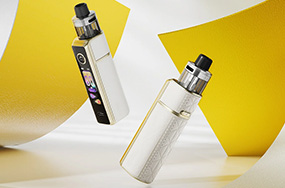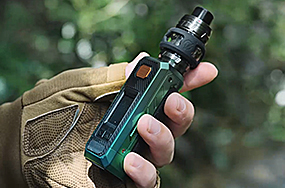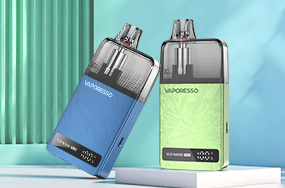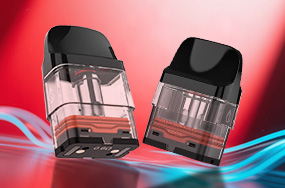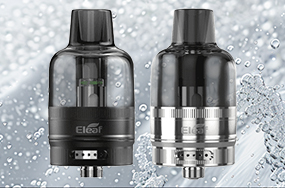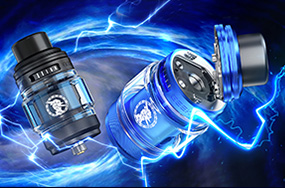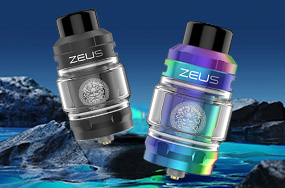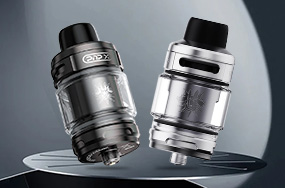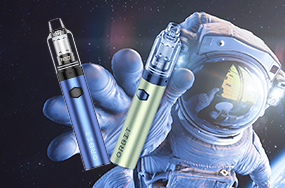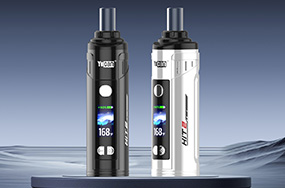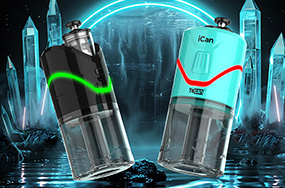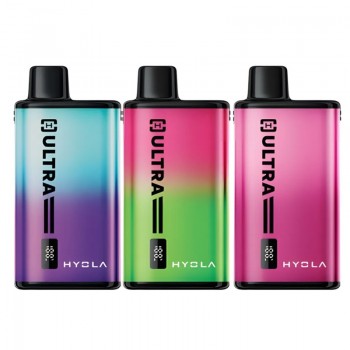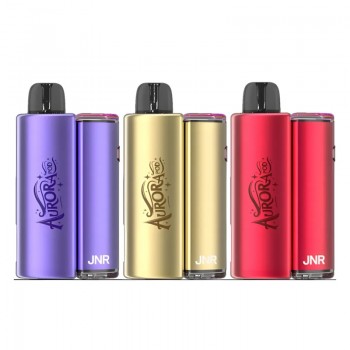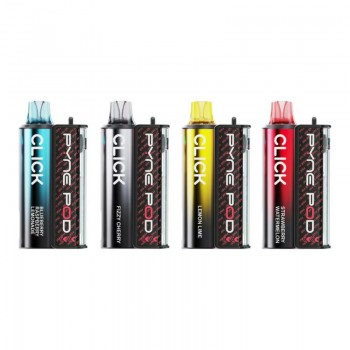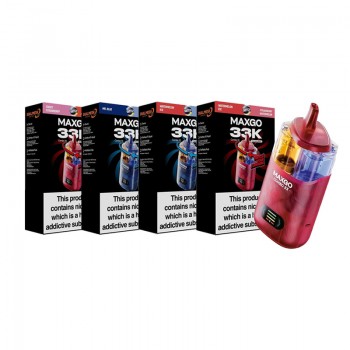The impending ban on disposable vapes in the UK, anticipated by 1 June 2025, represents a significant regulatory intervention aimed at addressing the escalating concerns surrounding youth vaping and the considerable environmental impact of these single-use devices. This policy initiative is not merely a health-driven measure; its foundation is broadened by strong environmental motivations, which expands its public and political support base, making the policy more robust and less susceptible to opposition. This dual justification provides a more resilient framework for the ban, and for platforms, highlighting the environmental benefits of alternatives can resonate with a broader audience.
The ban poses a dual challenge: safeguarding young people from nicotine addiction while simultaneously ensuring that adult smokers retain access to effective harm-reduction tools. This comprehensive regulatory shift necessitates a strategic pivot within the market, with an inevitable move towards alternatives such as prefilled pod kits and other regulated nicotine delivery systems. The "warning article" aspect of this analysis is critical not just for consumers who must adapt their habits, but also for businesses. The ban represents a profound market disruption, requiring immediate strategic planning from retailers and e-commerce platforms to mitigate potential economic fallout and capitalise on emerging opportunities. This dual focus on consumer and business implications enhances the value of this report, aligning to build trust through comprehensive utility. Proactive adaptation from all stakeholders—consumers, retailers, and online platforms—is essential for a smooth transition and long-term market stability.
The Impending Shift: Understanding the UK's Disposable Vape Ban
The UK government is poised to implement a decisive legislative step to address growing concerns surrounding disposable vaping. This move is framed as a comprehensive effort to reshape the vaping landscape, driven by both public health and environmental imperatives.
Key Measures and Legislative Framework
The core of the impending legislation is the prohibition of the sale and supply of disposable vapes. This measure signifies a complete removal of these products from the legitimate retail market. Beyond this direct ban, the government is also acquiring broader regulatory powers. These powers extend to restricting vape flavours, regulating packaging to make products less appealing, and changing how vapes are displayed in retail environments. This indicates a comprehensive approach to controlling the appeal and accessibility of all vaping products, not just disposables. These measures are integrated into a wider Tobacco and Vaping Bill, signalling a long-term commitment to nicotine regulation and suggesting a broader regulatory agenda for the future.
To ensure compliance, new enforcement powers will be granted to local authorities, including the ability to issue on-the-spot fines. This underscores the government's serious intent regarding the ban's effective implementation and adherence across the retail sector.
The primary rationale underpinning this ban is the significant rise in youth vaping. Data indicates a concerning trend, with regular vape use among 11-17-year-olds increasing from 4.9% in 2022 to 7.6% in 2023. This statistical urgency provides the main impetus for the ban. A secondary, yet equally compelling, rationale is the alarming environmental burden posed by disposable vapes. An estimated 5 million units are discarded weekly, contributing substantially to lithium battery and plastic waste. This environmental justification adds another layer of public support and policy imperative, broadening the ban's appeal beyond health advocates.
The multi-pronged approach of the ban—encompassing outright prohibition, alongside restrictions on flavours, packaging, and display—suggests a proactive strategy. This approach aims to address not just product availability but also the inherent appeal and marketing of vaping products, thereby reshaping the entire vaping landscape rather than simply eliminating one product type. This broader regulatory intent implies that even alternative products, such as prefilled pod kits, might face future restrictions on flavours or marketing if they become too appealing to youth. Businesses should therefore anticipate a continuously evolving regulatory environment and design products and marketing strategies with long-term compliance in mind, rather than focusing solely on short-term adaptation to the disposable ban.
Timeline and Implementation Details
The ban on disposable vapes is expected to be implemented by early 2025. The public consultation period for the ban concluded in December 2023, indicating that the policy decision-making process is largely complete and public input has been considered. Legislation is slated for introduction "as soon as possible", signalling the government's intent for rapid progression and minimal delay. The combination of a clear timeline, a completed consultation process, and the establishment of new enforcement powers strongly indicates a high probability of the ban proceeding as planned. This certainty requires immediate action rather than speculative waiting from both businesses and consumers. Delaying adaptation strategies is no longer viable; the warning is about a near-certain event, necessitating decisive preparation.
To provide a clear overview of the key dates and measures, the following table summarises the critical information regarding the UK's disposable vape ban:
Table 1: Key Dates and Measures of the UK Disposable Vape Ban
| Measure/Event | Details |
|---|---|
| Prohibition of Sale & Supply of Disposable Vapes | Ban on the manufacture, sale, and supply of single-use electronic cigarettes. |
| New Powers for Flavour Restrictions | Ability to limit or ban specific vape flavours. |
| New Powers for Packaging Regulations | Authority to regulate vape packaging to reduce appeal, especially to youth. |
| New Powers for Vape Display Rules | Changes to how vapes are displayed in retail environments. |
| New Local Authority Enforcement Powers | Local authorities granted powers to issue on-the-spot fines for non-compliance. |
| Public Consultation Closure Date | December 2023 |
| Expected Implementation Date | 1 June 2025 |
Anticipated Challenges and Unintended Consequences
While the disposable vape ban is driven by clear public health and environmental objectives, it is crucial to acknowledge the potential negative repercussions. Even well-intentioned policies can have complex and unforeseen outcomes that require careful consideration and proactive mitigation strategies.
Economic Impact on Businesses and Consumers
The ban presents significant economic challenges, particularly for retailers. Small independent vape shops and convenience stores are heavily reliant on disposable vape sales, and they face the immediate need to clear existing stock and make substantial investments in new, compliant product lines. This constitutes a direct financial hit and demands a considerable operational overhaul. Beyond individual retailers, the broader supply chain, from manufacturers to distributors, will experience disruption as they pivot away from a highly lucrative and fast-moving product category. This could lead to temporary supply gaps or increased logistics costs during the transition period.
For consumers, while prefilled pod kits ultimately offer long-term savings, the initial higher upfront cost compared to the perceived cheapness of single disposable units could act as a barrier for some. This perception might lead to consumer dissatisfaction or a reluctance to switch to legitimate, regulated alternatives.
Potential for Illicit Market Growth
A significant concern is the potential for the ban to fuel the growth of an already existing illicit market for vapes in the UK. This black market is characterised by the sale of unregulated, untaxed, and potentially dangerous products. The prohibition of legitimate disposable vape sales risks creating a vacuum in consumer demand that the black market is poised to fill. This makes it considerably harder for authorities to control the supply of unsafe products, directly undermining the public health objectives of the ban. The severe risks associated with black market products include unknown ingredients, a complete lack of quality control, incorrect nicotine levels, the absence of age verification, and a heightened potential for increased youth access.
The ban creates a significant opportunity for regulatory arbitrage, where the very act of prohibition for legitimate channels drives demand towards unregulated, and potentially more dangerous, alternatives. This dynamic could undermine the public health goals of the policy. The ultimate success of the ban, from a public health perspective, therefore hinges not just on stopping legitimate sales but critically on mitigating the growth of the black market. This requires robust enforcement, combined with effective consumer guidance towards legitimate alternatives, to reduce the incentive for consumers to seek illicit products. If the black market flourishes, the ban could inadvertently increase harm.
Public Health Considerations and User Adaptation
From a public health perspective, a key dilemma arises: while the ban targets youth vaping, some experts express concern that it could inadvertently push adult vapers back to smoking traditional cigarettes, which are significantly more harmful. This highlights a tension within public health goals. The policy necessitates a delicate balance: preventing youth uptake, which has seen a concerning rise, while ensuring continued, accessible pathways to less harmful alternatives for adult smokers trying to quit. Public health bodies, such as ASH, support the youth-focused ban but emphasise the importance of maintaining adult access to regulated alternatives.
Furthermore, vapers transitioning from the extreme convenience and immediate gratification of disposables will face psychological and practical hurdles. These include learning about new devices, managing refills, battery charging, and understanding different product functionalities, which could be a deterrent for some.
This policy decision, while specifically targeting disposables, implicitly redefines the acceptable parameters of harm reduction within the UK. It signals a prioritisation of youth protection and environmental concerns over the broadest possible access to all vaping products for adult smokers. This suggests a move towards a more controlled, "responsible," and less overtly attractive harm reduction framework. This could set a precedent for future regulations on other vaping products or nicotine alternatives, potentially impacting flavour availability, marketing, and product design across the entire category. It indicates that convenience and low cost, hallmarks of disposables, will be sacrificed for broader public health and environmental objectives, even if it carries a marginal risk of some vapers reverting to smoking.
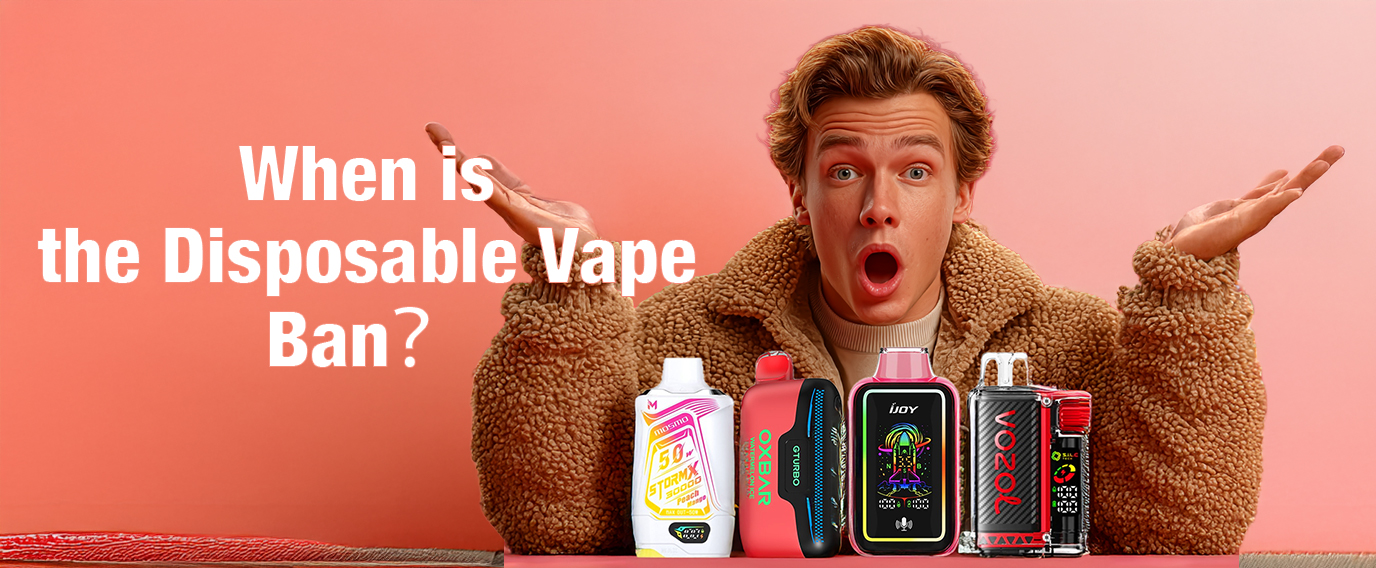
The Evolving Landscape: Market Shift to Alternatives
In response to the impending ban, the market is already demonstrating a rapid pivot towards viable, regulated, and more sustainable alternatives. This shift is being led by established players within the vaping industry.
Rise of Prefilled Pod Kits: Brands and Features
Prefilled pod kits are positioned as the most likely and immediate primary alternative to disposable vapes, largely due to their similar convenience profile. A significant indicator of this transition is the proactive diversification by major disposable vape manufacturers. Leading brands like Elf Bar and Lost Mary are already offering their own prefilled pod kits, such as Elf Bar Elfa and Lost Mary Tappo. This demonstrates industry readiness and provides a clear transition path for consumers.
The advantages of prefilled pod kits are manifold:
Convenience: They offer similar ease of use to disposables, requiring minimal setup and maintenance, which makes them highly appealing to former disposable users.
Cost-Effectiveness: In the long run, these systems are significantly more economical compared to single-use disposables, offering substantial savings for regular users.
Environmental Friendliness: Their design, featuring rechargeable batteries and less overall waste, contributes to a reduced environmental footprint compared to disposables.
Innovation: The category is seeing ongoing innovation, including larger e-liquid capacities, improved battery life, and diverse flavour ranges, all designed to mimic and even surpass the convenience and appeal of disposables.
The proactive pivot by major disposable vape brands into prefilled pod kits signifies a strategic industry consolidation and a tacit acceptance of the regulatory shift, rather than outright resistance. This industry-led transition will likely accelerate consumer adoption of prefilled pod kits, as users will naturally gravitate towards familiar brands. It also implies that the market will consolidate around larger players who possess the resources to innovate and adapt, potentially marginalising smaller, less agile competitors.
The emphasis on prefilled pod kits being "cost-effective" and "environmentally friendlier" positions these alternatives not just as regulatory compliant, but as superior choices. This allows platforms to frame the ban as an opportunity for consumers to "upgrade" their vaping experience. This positive framing can significantly reduce consumer resistance and foster positive adoption, helping to build trust by presenting the ban not as a loss but as a catalyst for a more sustainable and economically sensible vaping habit.
Other Smoking Tool Brands and Nicotine Alternatives
While prefilled pod kits are expected to dominate the immediate transition from disposables, the broader market for nicotine alternatives will also see increased activity as consumers explore options. These include:
Refillable Pod Systems: These offer greater customisation in terms of e-liquid choice and significant long-term cost savings, though they require more user engagement (e.g., refilling, coil changes).
Nicotine Pouches: Tobacco-free oral nicotine products that provide a discreet, smoke-free, and vapour-free alternative.
Heated Tobacco Products: Devices that heat specially designed tobacco sticks to produce a nicotine-containing aerosol without combustion, potentially reducing harmful chemicals compared to traditional smoking.
The immediate shift from disposables will primarily be towards prefilled pod kits due to brand familiarity and manufacturer push. However, the broader market for nicotine alternatives will also see increased activity as consumers explore options beyond direct vape replacements.
Consumer Preferences and Transition Strategies
Effective transition strategies require clear, accessible information campaigns to guide consumers toward legitimate, regulated alternatives and away from the illicit market. This includes effectively educating consumers about the long-term cost savings of prefilled systems, which can help overcome the initial higher upfront cost perception of the devices themselves. Manufacturers are also designing prefilled pod kits to replicate the user experience of disposables, such as draw activation and compact size, to ease the transition for former disposable users.
To illustrate the anticipated market shift and provide practical guidance on alternatives, the following tables are presented:
Table 2: Market Share Shift: Disposable Vapes vs. Prefilled Pod Kits (Pre-Ban vs. Post-Ban Projections)
| Product Category | Estimated Market Share (Pre-Ban 2024) |
Projected Market Share (Post-Ban 2025/2026) |
|---|---|---|
| Disposable Vapes | 50–60% | 0% (Legitimate Market) |
| Prefilled Pod Kits | 15–25% | 60–70% |
| Refillable Pod Systems | 10–15% | 15–20% |
| Other Nicotine Alternatives | 5–10% | 10–15% |
Table 3: Recommended Prefilled Pod Kit Brands and Features
| Product Category | Estimated Market Share (Pre-Ban 2024) |
Projected Market Share (Post-Ban 2025/2026) |
|---|---|---|
| Disposable Vapes | 50–60% | 0% (Legitimate Market) |
| Prefilled Pod Kits | 15–25% | 60–70% |
| Refillable Pod Systems | 10–15% | 15–20% |
| Other Nicotine Alternatives | 5–10% | 10–15% |
Note: Features and availability may vary by region and ongoing product development.
Preparing for 2025: Recommendations for Consumers and Platforms
The impending ban necessitates a proactive and informed approach from both individual vapers and industry stakeholders to ensure a smooth transition and mitigate potential negative impacts.
Guidance for Vapers on Transitioning
Disposable vape users are strongly encouraged to begin exploring and transitioning to prefilled pod kits or other regulated alternatives well in advance of the early 2025 deadline. Procrastination in this regard could lead to limited options and potential reliance on illicit sources. When choosing a suitable prefilled pod kit, practical advice includes considering factors such as battery life, pod capacity, available nicotine strengths, and the range of flavours offered, with the aim of replicating the disposable experience as closely as possible.
It is crucial to reiterate and clearly explain the long-term financial benefits of switching from expensive, single-use disposables to more economical prefilled systems. This helps consumers overcome any initial perception of higher upfront costs. Furthermore, consumers must be advised to seek information and purchase products only from legitimate, regulated sources to avoid the dangers of the illicit market and ensure product safety and compliance. Even for existing disposable vapes, emphasising the importance of proper disposal methods due to their environmental impact is vital for promoting responsible consumer behaviour.
Strategic Insights for Online Platforms and Retailers
For retailers, effective strategies for responsibly clearing existing disposable vape stock before the ban takes effect are paramount. This involves understanding sell-through rates and potentially implementing strategic discounts. Simultaneously, they must strategically invest in new, compliant product categories. Comprehensive product diversification is essential, meaning expanding product offerings to include a wide range of prefilled pod kits, refillable systems, and other legitimate nicotine alternatives to cater to diverse consumer preferences and capture market share.
Online platforms and retailers have a critical role in actively educating their customer base about the ban, its implications, and the available alternatives. This includes creating clear guides, comprehensive FAQs, comparative product content, and engaging educational resources across various channels. Providing accurate, timely, and helpful information, coupled with transparent communication about the ban's impact, is paramount for building and maintaining customer trust during a period of significant regulatory uncertainty. Furthermore, understanding and adhering to the new enforcement powers and regulations is crucial to avoid fines and legal repercussions and maintain legitimacy in the eyes of regulators and consumers. Finally, platforms can strategically align their messaging with the environmental benefits of prefilled pod kits to appeal to environmentally conscious consumers and differentiate their offerings as a responsible choice.
The success of the ban, from both a public health and market stability perspective, hinges significantly on the effectiveness of consumer education and the proactive role of online platforms in guiding users to legitimate alternatives. This approach is vital for minimising the growth of the illicit market. If consumers are not adequately informed about why the ban is happening, what their legitimate options are, and where to find them, they are highly susceptible to seeking out unregulated products or reverting to more harmful habits. Online platforms are uniquely positioned to be the primary source of this crucial, trustworthy information.
For retailers and platforms, the ban necessitates a strategic shift from a purely transactional sales model, which characterised the sale of cheap, high-turnover disposables, to a more consultative, value-added model. This new approach must focus on educating customers and promoting long-term, sustainable vaping solutions. Selling disposables was relatively straightforward; selling prefilled pod kits requires more engagement with the customer, explaining long-term cost benefits, environmental advantages, usage, maintenance, and product variety. Retailers and platforms that embrace this consultative role, providing clear, empathetic information and guidance, will be better positioned to retain customer loyalty and build sustainable relationships.
Conclusion: Building Trust and Future-Proofing in a Changing Market
The UK's impending disposable vape ban is an undeniable reality, marking a pivotal moment in the nation's approach to nicotine regulation. Its multifaceted impacts span public health, environmental sustainability, and significant economic disruption, while simultaneously fostering a clear, industry-led market shift towards prefilled pod kits as the primary alternative.
For both consumers and businesses, preparedness and proactive adaptation are not merely options but essential imperatives for successfully navigating this significant regulatory change. The success of this transition, and indeed the broader public health objectives of the ban, will heavily depend on the effective dissemination of accurate, timely, and comprehensive information. Online platforms that serve as reliable, trustworthy sources of such information will build invaluable customer loyalty and solidify their position as authoritative industry leaders.
This ban, while disruptive, can be viewed as a catalyst for market maturity and responsible innovation within the vaping industry. It moves the sector away from a "wild west" image towards a more regulated, sustainable, and socially acceptable future. This forced evolution pushes the industry to address its externalities and adopt more responsible product designs and business practices, potentially improving the overall public perception and regulatory standing of the vaping industry in the long run.
Ultimately, building trust in this evolving landscape extends beyond simply providing facts. It requires demonstrating empathy for affected consumers and businesses, and offering clear, actionable solutions that empower them to adapt, rather than merely stating the problem. By addressing anticipated challenges head-on and offering concrete recommendations, platforms can demonstrate genuine care and expertise, solidifying their position as an invaluable and trusted resource. The future of nicotine regulation is likely to continue evolving, underscoring the importance of continuous monitoring of policy developments and ongoing adaptation for long-term success and resilience for all stakeholders.








